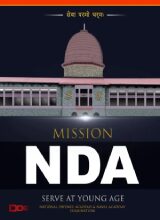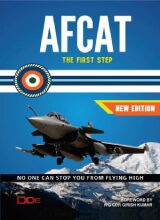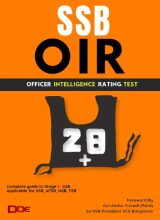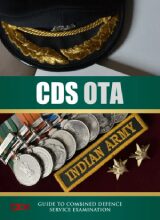9 Radars system for armed forces developed by DRDO
Radar stands for Radio Detection and Ranging is one of the important part of any Armed Forces in the world. LRDE (Electronics and Radar Development Organisation) is the laboratory which comes under Defence reasearch of Development Organisation which is responsible for developing radar systems for the Indian Armed Forces.
In this blog we will discuss about 9 radar systems developed by LRDE/DRDO for the Indian Armed Forces.
So Let’s start
1. INDRA-I (Indian Doppler Radar)
Indra-I is a Tactical Surveillance Radar for Army for point and area defence or as gap filler for the air defence, especially against aircraft threat at very low altitudes. This was the first high power radar system for the Indian Army developed by DRDO, followed by Indra Pulse Compression (PC) version for the Indian Air Force, also known as the Indra-II, which is a low level radar to search and track low flying cruise missiles, helicopters and aircraft.
Users : Indian Army and Indian Air Force
Status : The system have been inducted into Service. Operational with Air Force
2. Indian Doppler Radar – Pulse Compression (INDRA-PC)
Indra Pulse Compression radar was developed to meet Air Defence requirements of the Air Force. It is a low flying target detection 2D radar. The radar mounted on three wheeled vehicles, is transportable by Rail, Road and Air.
These are basically 2D radars which provide range, and azimuth information, and are meant to be used as gapfillers.
Users : Indian Air Force
Status : Operational with Air Force
3. Battle Field Surveillance Radar – Short Range (BFSR-SR)
It is a man portable, battery operated Surveillance Radar developed for the Indian Army. The radar has been developed for deployment in the forward localities with the capabilities to detect, track and classify variety of moving ground surface targets. BFSR-SR – a reliable sensor for day and night operations in all weather conditions – has made surveillance of forward areas effective in 24 X 7 environment and has firmly established self-reliance in that class of radar. The radar can be carried in three man-packs.
The radar is a simple, easy to use and user-friendly surveillance e-sensor, in that an Infantry soldier can install and effectively put the radar into operation within five minutes. It has been built to be a reliable surveillance and tracking radar to search a specific sector to detect and perform track while scan for multiple targets like crawling man, single / group of walking men, light / heavy vehicles. Audio and visual aids help identify and classify a target. The radar is also a potential ground based e-sensor for Border Security Force, Coast Guard and Police for surveillance of designated areas. The radar would be a very cost-effective perimeter surveillance sensor for airports, large industrial and other infrastructure.
Users : Indian Army and BSF
Status : The system has been inducted into Service.
4. Rohini-3D Surveillance Radar for Indian Air Force
The 3D Surveillance Radar, Rohini is a ground based mechanically scanning, pulse Doppler radar for air space surveillance to detect and track air targets with reliability, even under hostile EW operational environment. The radar has advanced technologies like digital receiver, and programmable signal processor providing high resolution, accuracy, response and information availability. The advanced software algorithms, multiple high speed processors, and state-of-the-art digital technologies have made the radar an effective but user friendly sensor providing 24 x 7 airspace awareness to the Commanders during peace and war time.
User : Indian Air Force
Status : In Operational use with Airforce
5. Revathi-3D Surveillance Radar for Indian Navy
3D Surveillance Radar, Revathi is a ship borne mechanically scanning pulse Doppler radar for 3D air space and sea surface surveillance. The radar is capable of providing reliable detection/tracking air targets and sea surface targets even under hostile EW operational environment. The radar is a state-of-art technology. The flexible architecture system is a reliable and adaptable, for multiple applications – early warning for air and sea surface defence weapon system, defence sensor onboard ship. The radar has advanced technologies like multiple simultaneous on receive, digital receiver, programmable signal processor providing high resolution, accuracy, response and information availability.
User : Indian Navy
Status : In Operational use with Indian Navy
6. Akash Weapon System
It is the primary sensor at the battery level for Akash surface to air missile weapon system which is an air defence system for the Indian Army and Air force. The radar has the capability to perform extensive search, track multiple targets and missiles, and to command and guide own multiple missiles concurrently. The multi functionRajendra replaces multiple radar requirements like surveillance, tracking and guidance. The radar supports autonomous and group mode operations of Akash weapon system.The Radar system is configured on two vehicles – Sensor vehicle and Command post. For Air Force it is configured on trailor with prime movers and for Army it is on Tatra high mobility vehicles.
Users : Indian Air Force and Indian Army
Status : In Operational use with Airforce and Indian Army
Also read: 14 Decemeber 1971 – The tree top dogfight
7. Weapon Locating Radar (WLR)
WLR is a coherent, electronically scanned phased array radar. The radar automatically locates hostile artillery, mortars and rocket launchers and tracks friendly fire to locate the impact point of friendly artillery fire to issue necessary corrections. The radar is designed to detect projectiles with small cross section across the battle space horizon, and has the capability to handle simultaneous fire from weapons deployed at multiple locations. The fence concept of placing the beam grazing the covered air space makes it difficult for hostile projectiles to escape without detection. The radar helps neutralize hostile guns in the tactical battle space and helps own guns for effective shelling on designated enemy targets.
The radar has been developed for Indian Army to substitute the imported system and acts as a force multiplier for Artillery.
User : Indian Army
Status : Orders placed by Army on Production Agency
8.Low Level Light Weight Radar (LLLR)
Low Level Light Weight Radar is a light weight, battery powered and compact sensor, mounted on a quadripod, which provides 2D surveillance solution to alert Army Air Defence Weapon Systems mainly in mountainous terrain against hostile aerial targets like UAVs, RPVs, helicopters and fixed wing aircraft flying at low and medium altitudes. The radar can be transported by vehicles, animal transport or group of men or as heli-slung loads. It can be dismantled into packages to facilitate quick installation and re-location in mountainous terrain. It will act as an early warning provider to air defence weapon systems employed to provide protection to vulnerable areas or vulnerable points in the mountains by the Indian Army.
User : Army Air Defence
Status : In Operational use with Indian Army
9. Aslesha Mk I-3D Low Level Light Weight Radar
It is a multi-faceted ground based 3D low level light weight surveillance radar for deployment in diverse terrains, like plains, deserts, mountains, and high altitude regions. It can detect and track heterogeneous air targets, including helicopters, fighters and UAVs at low and medium altitudes. It provides accurate range, azimuth and height information for each target with electronically steerable multi-beam technology in elevation.
User : Indian Air Force
Status : In Operational use with Air Force
Other than these radars there are two more radars which are under trials or under induction. 3D Tactical Control Radar (3D TCR) and Maritime Airborne Patrol Radar (XV 2004) respectively.
So this was it
JAI HIND









 Buy Now on Amazon
Buy Now on Amazon
